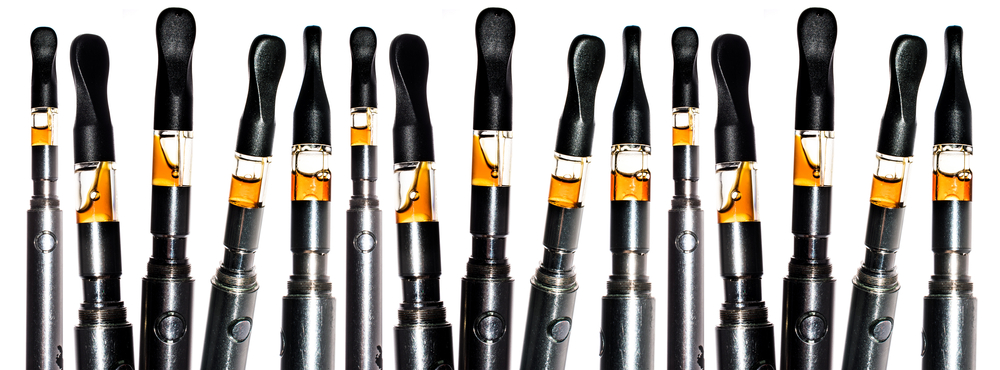Web Banner
Does your website have banner ads? If so then it’s important to track them and one ways is through banner reports. That’s what this website is all about and the goal is to provide all the info you’d ever need about banners and banner ads.
It’s important to note that web banners work very similarly to traditional ads.
When using web banners it’s important to know exactly what they are and how they’re used on websites. Awe banner is any types of Internet advertising that’s also referred to as a banner ad and provided via an ad server. It shouldn’t be used to refer to a non-advertising banner located at the top of an Internet page that identifies graphics on the site. It’s located on or the main content of the site. That type of banner is actually referred to as a hero image.

What Is a Web Banner?

A banner ad is a type of web-based advertising that’s added to a web page as an advertisement. The goal is toboost web traffic by connecting to the advertiser’s website. A central ad server is often used to provide the banner. The advertising company first scans logfiles and is able to detect an Internet user visited the site of the advertiser via the content website via clicking on the banner ad. Then the advertising company sends some money to the content provider. The amount ranges but is often less than 10 US cents.
Content Providers
Content providers often use the pay-back system so it can provide payment for the web access in order to provide the content.

However, online advertisers typically use ad networks in order to provide advertisements. This results in a “revshare system” as well as high-end ad placement.
It’s important to note that web banners work very similarly to traditional ads. They inform consumers of a product/service and show reasons why a consumer ought to select the product that’s offered. This process was documented for the first time in 1996 by “HotWired” by researchers. However, banner ads different since the results for various ad campaigns might be include real-time monitoring and the interests of the viewers might target them.
The behavior is frequented tracked via click tags. Many of today’s netizens consider the ads to be annoying. That’s because they keep them away from the actual content of a web page and/or waste their bandwidth.
There’s now options that can block web banners. They include called adblockers that are used to turn off block or pop-up images from various websites. There’s also a proxy server that can also be used to avoid banners. It’s also possible that web browsers have extensions that are able to block banners. There’s various examples including Mozilla Firefox’s Adblock Plus and Google Chrome’s AdThrwart.
The History of Banner Ads
It’s important to know about the history of banner ads. It started with a company called Prodigy that was owned by the tech giant IBM and retail giant Sears. The company used web-based advertising in order to prmote products from Sears in the 1980s. It later promoted other companies. A problem was that Prodigy was unable to improve its gain a competitive edge using its Internet advertising.
Meanwhile, Global Network Navigator (GNN) created the first web ad that was clickable in 1993. It was for a Silicon Valley branch of a law office located in California. It’s interesting to note that GNN was the first-ever web publication that was supported commercially. The company was also one of the world’s first commercial Internet sites.
Websites that were the first websites to sell big amounts of banner ads were Time Warner and HotWired. The publication Advertising Age closely followed the first year of Time Warner’s activities of ad sales. There’s been some debate about which company was the first to sell web banners to corporate sponsors. Time is often credited with creating the idea of Internet banner ads that were clickable. This created a standardized system that helped to boost the sky-rocketing growth of web advertising.
HotWired’s first-ever CEO was Rick Boyce. He headed the company’s sales division. HotWired was the first company to use “banner ad” It was also the first business to provide customers with click-through rates. HotWired’s first web banner it sold was for AT&T and went online in October 1994.
However, other sources give HotWired credit for the first banner ad but it’s for the Coors/Zima campaign. It was believed that a direct response model was the only way to provide long-term results through Internet advertising. It’s interesting to note that banner ads were sold according to the quantity of impressions they were able to generate.
Benefits Banner Ads
Why should your company use banner ads? Here are some of the main reasons:
1. Save time
This is for the company as well as the publisher. That’s due to the time required to create a brand new banner ad. In order to make a banner ad all that’s required is a line of code, website link, and image. This requires a lot less time than an ad with written text.
2. Visibility
In fact, banner ads are often considered to be online advertising that’s the most visible type. One reason is that they’re on many web pages on the Internet. Another factor is they include images that are eye-catching, which attract the attention of people.
3. Placement
Another major benefit of banner ads is that they be added to nearly any web page. A bigger audience can then view the ad. This can be seen by a larger audience than a Facebook ad, for example. That’s because it’s limited to a single social site. Banner ads target particular audiences by allowing you to post a banner on a particular web page. This can help to greatly boost a company’s web traffic.
Importance
It’s important to get banner reports to show information about your website’s banners. This will help to provide information that can help your company determine which banners you should keep, tweak, or ditch. There’s a lot of different software you can pick to provide the information to your online company.
Storing E-juice in the right way
How do you store e-juice the right way? Now, you may be thinking that e-juice pretty much can be stored any old way. After all, it’s just a chemical formulation of nicotine. How bad could bad storage decisions be?
Well, if you’re dealing with any kind of biochemical compound, especially something in liquid form, there will always be degradation. The chemical bonds as well as the specific formulation of the ingredients that went into the product may not withstand tremendous temperature variations. It may break down or separate into different layers when exposed to light.
All sorts of bad things can happen. Don’t think that just because you bought from a credible and trustworthy vendor that you’ve done business with for a long time that the product would be able to withstand shoddy or careless handling. That’s really the issue here.
Make no mistake about it, when your e-juice source delivered the product to you, they already did their job. They delivered a product that lived up to its billing. It tastes the way it was described. It performs as described.
If both of these factors are present, then your source is off the hook. They already did what was reasonably expected of them. Everything else that could happen is on you.
I know this sounds pretty jarring and it’s definitely not the kind of answer a lot of people would expect, but it’s absolutely true. Why put the responsibility or blame on your vendor when it turns out the way you handled your e-juice caused it to break down prematurely?
You have to store it properly. So here are just some rules of thumb that I follow to ensure that my vaping juice delivers an amazing experience for months, if not years, down the road.
First, make sure that you buy the right container. The problem with buying huge lots of vape juice from eliquid-depot.com and then storing them in any old soda bottle is the fact that those bottles are not designed to contain e-juice. It’s important to make sure that you buy specialized equipment.
Sure, we’re talking about plastic containers. You might be thinking at the back of your head how different could plastic containers be? Well, it turns out that they can be quite different because plastic actually comes in many different chemical “blends.” Just like there are many different blends of coffee or tea using different composite ingredients, the same applies to plastics and their composite materials.
You have to pick the right blend because these differences impact how well they stand up to chemical pressure. Some deteriorate quickly over time, others don’t mix well with vape juice and they start to deteriorate. So make sure you are looking at the right plastic type. At the very least, you need a plastic type that would ensure that the nicotine content of your vape juice or e-juice remains intact over an extended period of time.
The next thing that you need to look at is the size of the container. As I mentioned above, buying a tremendous amount of e-juice at one time might not be a smart move. Not only would there be container-related issues, but there would also be early breakdown issues.
The great thing about vaping is that you probably would need a tremendous amount of juice sooner that you expected. But you shouldn’t allow this fact to somehow delude or trick you into buying jugs, if not gallons, of this liquid way before you need them.
You have to remember that when you’re dealing with any kind of liquid, especially all-organic, perfectly natural e-juice formulations, these liquids do settle. This is especially true for compounds. Meaning, these liquids don’t normally go with each other, but they have been blended together. So you have to consume that liquid in a relatively short period of time, otherwise, the different parts that were blended together would start to filter.
It’s not unusual for, for example, condiment liquids, including fish sauce, or perhaps tomato paste, to separate into solids, liquids, and then oils. The same situation can play out with e-juice depending on the particular manufacturer and formulation you bought.
Given this reality, it doesn’t make sense to buy really large containers and store a tremendous amount of e-juice. Instead, you might want to look at your actual usage pattern and double it. That should be the upward limit of the amount of vaping liquid you should have available.
The third thing that you need to pay attention to is storage location. It’s always a good idea to store any kind of liquid that is prone to breakdown or go through some sort of internal chemical change or filtering or separation, in a cool, dark place. This way, you are shielding the container from two factors that put a tremendous amount of pressure and inflict quite a bit of punishment on liquid as well as solid chemical compounds. I am, of course, talking about heat and light.
Many substances only need to come contact with open air and under normal heat start breaking down. Others need light to trigger some sort of chemical chain reaction that leads to the chemical bonds of the liquid breaking down to such an extent that the liquid starts separating itself.
Regardless of how you cut it, you really have to be proactive in making sure that the environmental factors that lead to some sort of degradation, separation or some sort of breakdown in the chemical bonds holding together the compounds in a formulation are simply present. This is why it’s a good idea to always keep your stuff in a cool, dry place.
Now, in many situations, it might even make sense to cover the stored items with some sort of cloth to further regulate the internal temperature of the liquids you are trying to store. Keep this in mind when storing e-juice.
Personally, I would not store it at all. Instead, I would only have one bottle available so by the time I’m almost done with my first bottle, and I’m ready to switch to the next bottle, I would have ordered my follow-up bottle.
Do you see how this works? This way, you get everything using a “just in time” system and you really cut out the possibility of you vaping with a less than fresh or less than effective e-juice.




